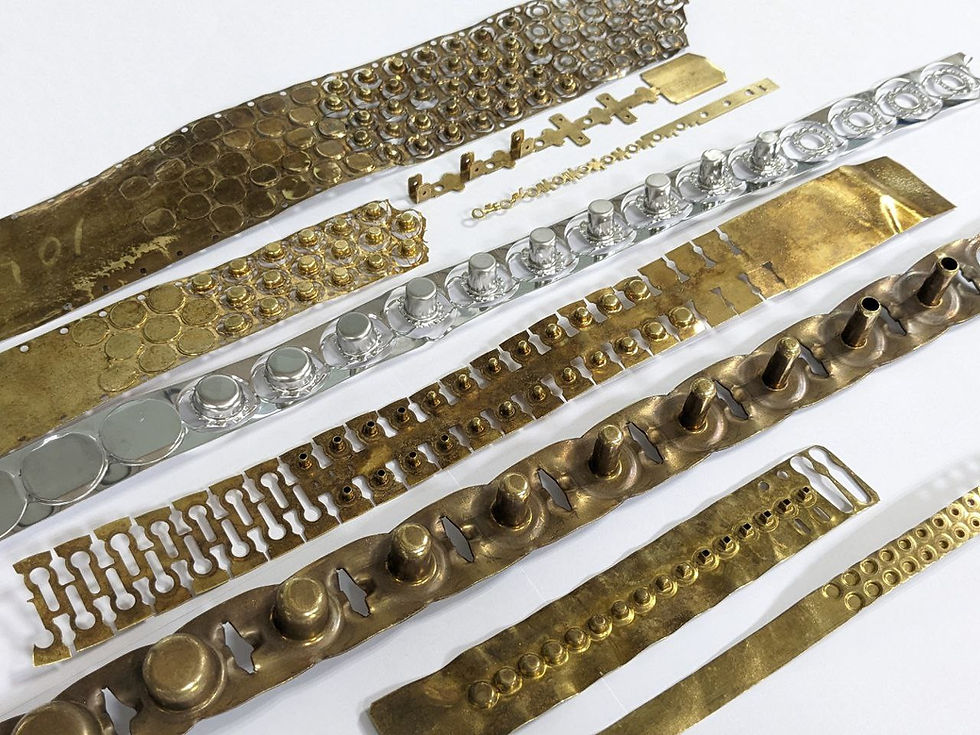In the world of small metal parts manufacturing, progressive cold stamping dies stand as an engineering feat. What makes them so exceptional? They allow the creation of extremely complex geometries by combining drawings, bending, cutting, rolling, beading and more, all in a single process.

Progressive dies: The engineering of complexity
Progressive cold stamping dies are meticulously designed to perform multiple operations on a metal sheet in a single stroke. The progressive process implies that the sheet moves through the different stations of the matrix, where each station performs a specific operation.
The ability of these tools to perform multiple actions allows the creation of parts with highly detailed and complex geometries. From parts for the electronics industry to precision components for automobiles, these dies are essential for the mass production of small but essential metal parts for the manufacture of all types of components in the industry.
The process in action
Imagine a metal sheet advancing sequentially through the stations of the progressive matrix. At each station, a series of tools, from punches to dies, perform a specific operation: embossing, folding, cutting, rolling or beading. This coordinated and precise sequence shapes the metal part until the desired geometry is reached. From rivets or parts with deep drawings, parts with complex geometries or die-cut parts such as washers or flat terminals.
Innovation and future
With advances in technology and design, stamping dies continue to evolve. The use of computer simulations to optimize die design, along with stronger and more durable materials, promises an exciting future in this field.
The role of press preparers: Precision craftsmen
Press setters are true masters in the art of setting up and adjusting the presses used in stamping processes. Their work goes beyond the mere operation of the machinery: they are experts in adjusting each element of the progressive dies and all the peripherals to guarantee that the metal sheet is transformed into the desired part with maximum precision. Its ability to optimize the performance of presses and dies not only improves part quality, but also contributes to operational efficiency, reducing cycle times and minimizing waste.
The perfect collaboration for excellence
Success in the manufacture of high-precision metal parts depends on the collaboration between ingeniously designed and adjusted progressive dies and the mastery of press setters. This synergy between die makers and press makers, between technical precision and human skill, is the key to producing quality parts in the manufacturing industry.
Conclusion
Progressive cold stamping dies represent the perfect marriage between geometric complexity and manufacturing precision, driving entire industries forward with their ability to create small but extraordinary metal parts, but success in manufacturing complex and High precision would not be possible without the experience and dedication of these professionals.
Have you had the opportunity to witness or work with progressive dies in the manufacture of metal parts or to witness the work of press preparers? Share your experience or questions about this fascinating process and recognize its invaluable contribution to the manufacturing of quality metal parts!

Comments